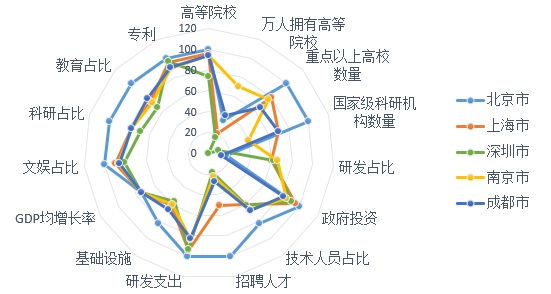 PDF(839 KB)
PDF(839 KB)


Evaluation System on Public Entrepreneurship and Innovation Based on Machine Learning
Shi Mengyi, Shen Yuncong, Li Jiaojiao, Zhang Siwei, Xu Mengyu
Knowledge Management Forum ›› 2019, Vol. 4 ›› Issue (2) : 98-109.
 PDF(839 KB)
PDF(839 KB)
 PDF(839 KB)
PDF(839 KB)
Evaluation System on Public Entrepreneurship and Innovation Based on Machine Learning
 ,
,
 ,
,
 ,
,
 ,
,

[Purpose/significance] Based on the open data related to scientific and technological innovation, this paper establishes the evaluation system and index for public entrepreneurship and innovation of the cities in China. [Method/process] By the machine learning algorithm, this paper established the Double-Innovation rank of domestic cities, and analyzed the Double-Innovation ability of the cities through various indicators and urban agglomeration characteristics. [Result/conclusion] The results show that the level of Double-Innovation in our country is closely related to economic resources, talent pool and policy environment. Beijing continues to lead Chinese dual-development, and the regional central cities are closely following it, these cities have their own advantages, and the development gap among them is small. The shortcomings of each city are also very clear. How to make reasonable countermeasures against their respective shortcomings, make up for the weaknesses, is the basis for the continuous development of urban innovation.

double-innovation / public entrepreneurship and innovation / evaluation system / double-innovation index
| [1] |
HAY M, COX L W, REYNOLDS P D, et al. Global entrepreneurship monitor (Gem)-2002 executive report[J]. Social science electronic publishing, 2002, 3(1):66–70..
|
| [2] |
ACS Z J, SZERB L, AUTIO E. The global entrepreneurship and development index[J]. Regional studies, 2015, 49(12):1977-1994..
|
| [3] |
FAIRLIE R W. Kauffman index of entrepreneurial activity by veteran status 1996-2011[J]. Ssrn electronic journal, 2012(21):28.
|
| [4] |
CHEN X, LIU Z, MA C. Chinese innovation-driving factors: regional structure, innovation effect, and economic development—empirical research based on panel data[J]. The annals of regional science, 2017, 59(1): 43-68.
|
| [5] |
胡平.“大众创业,万众创新”评价体系与评价方法探讨[J].科学与管理,2017,37(5):14-21.
|
| [6] |
周立, 吴玉鸣. 中国区域创新能力:因素分析与聚类研究——兼论区域创新能力综合评价的因素分析替代方法[J].中国软科学,2006(8):96-103.
|
| [7] |
何健文.广东区域创新能力分析报告——基于《中国区域创新能力报告2015》[J].广东科技,2017,26(2):47-52.
|
| [8] |
白嘉.中国区域技术创新能力的评价与比较[J].科学管理研究,2012,30(1):15-18.
|
| [9] |
中国科技发展战略研究小组. 2003中国区域创新能力报告[M]. 北京:经济管理出版社, 2004.
|
| [10] |
中华人民共和国国家统计局[EB/OL].[2018-01-25]. http://www.stats.gov.cn/.
|
| [11] |
中国经济与社会发展统计数据库[EB/OL].[2018-01-27]. http://tongji.cnki.net/kns55/index.aspx.
|
| [12] |
中华人民共和国教育局[EB/OL].[2018-01-27]. http://www.moe.gov.cn/.
|
| [13] |
国信宏数[EB/OL].[2018-01-27]. http://www.ndrcbd.org/.
|
| [14] |
臧鸣. 双创促升级 壮大新动能|上海已有7家全国双创示范基地[EB/OL].[2018-01-20]. http://www.thepaper.cn/newsDetail_forward_1794996.
|
| [15] |
何舜辉, 杜德斌, 焦美琪,等.中国地级以上城市创新能力的时空格局演变及影响因素分析[J].地理科学,2017,37(7):1014-1022.
|
史梦怡:数据处理,结果分析,论文结构搭建;
沈云骢:数据深度处理,模型设计;
李姣姣:数据收集及预处理,论文写作,论文修改完善;
张思维:文献综述的撰写以及论文写作;
徐梦宇:数据处理,模型设计。
/
| 〈 |
|
〉 |